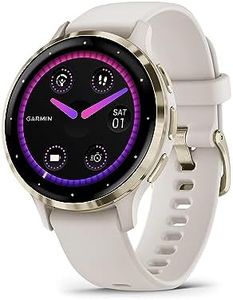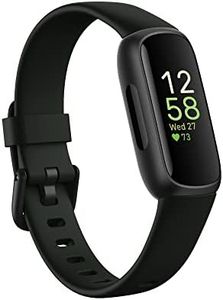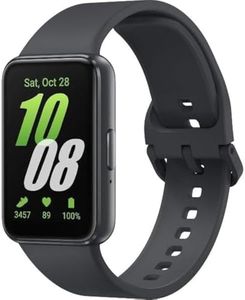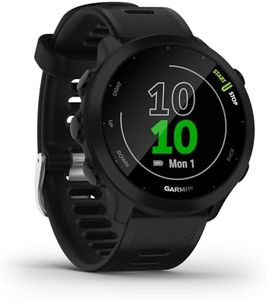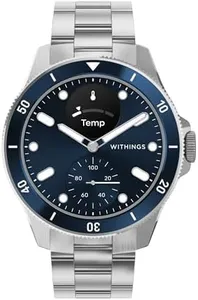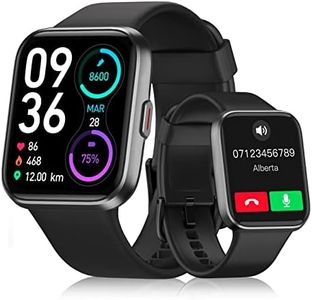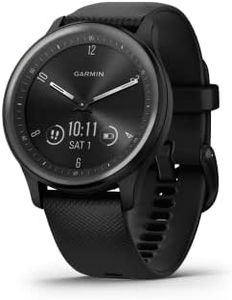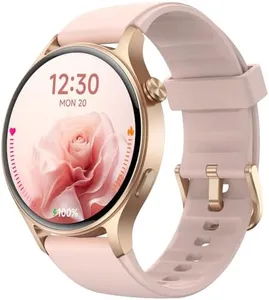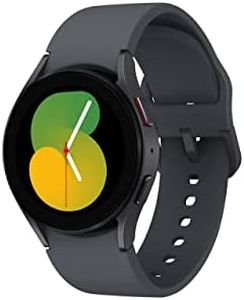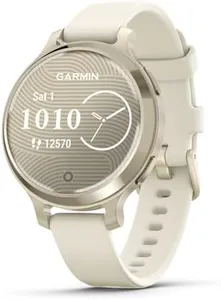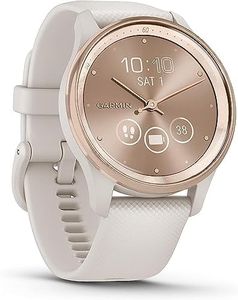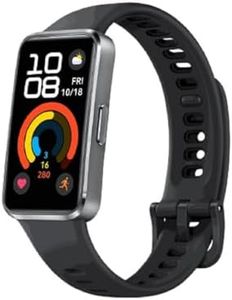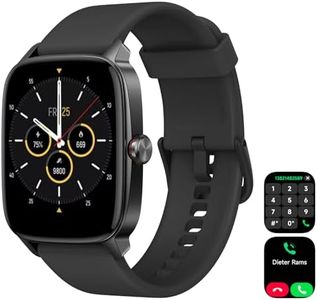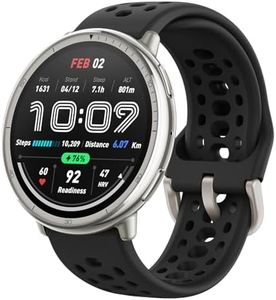We Use CookiesWe use cookies to enhance the security, performance,
functionality and for analytical and promotional activities. By continuing to browse this site you
are agreeing to our privacy policy
10 Best Smart Watch Small Wrist
From leading brands and best sellers available on the web.Buying Guide for the Best Smart Watch Small Wrist
Choosing a smartwatch for a small wrist can feel challenging, but it's all about comfort, style, and making sure the watch fits your daily needs without feeling bulky. You want a watch that looks good, feels good, and still has all the features you care about. The key is to focus on the size of the watch, the type of strap, weight, and design, as well as the features that matter most to you. Keeping these points in mind will help you find a smartwatch that's just right for your wrist and your lifestyle.Case Size (Diameter)The case size is basically the width of the watch face, usually measured in millimeters. On a small wrist, a large case can look oversized and feel uncomfortable, while a smaller case will sit better and look more balanced. Generally, case sizes under 40mm work best for smaller wrists—anything under 36mm is even more petite-friendly. If you have a very small wrist, look for the smallest sizes available to keep things comfortable and stylish. Try to visualize or, if possible, try on a similar-sized watch before buying.
Case ThicknessCase thickness is how tall the smartwatch is from the strap to the top of the screen. Thicker cases can make a watch feel chunky and less comfortable on a smaller wrist, while a thinner profile sits closer to your skin and looks more subtle. Anything below 12mm is usually considered sleek. If you wear long sleeves often or value comfort, go for a thinner watch.
Strap/Band Width and AdjustabilityThe strap width and how adjustable the band is are very important for comfort. Narrower straps (usually 16mm–20mm) look best on small wrists. Adjustable bands with lots of holes or a sliding closure let you find the perfect fit, so your watch doesn't slip or feel too tight. If you're concerned about skin sensitivity or style, also consider the material—silicone and soft leather are lightweight and comfy, while metal can be heavier but looks dressy.
WeightA heavy watch can be uncomfortable, especially on a small wrist. Smartwatches made with plastic or aluminum are lighter than those made with stainless steel. When possible, check the listed weight—a lighter watch is generally easier to wear all day, especially during activities like exercise or sleep.
Display SizeThe display size affects both visibility and the overall size of the smartwatch. Smaller displays are more subtle, but can make reading texts or navigating apps slightly tougher. If you prioritize a slim look and only need basic info at a glance, a smaller display is perfect. If you need to read longer messages, consider a medium-sized display, but make sure it doesn't feel too big on your wrist.
Shape (Round vs. Square)Smartwatches come in round and square shapes. Round faces tend to look more traditional and can blend nicely with daily outfits, while square or rectangular designs sometimes fit the wrist better and offer more screen space. This comes down to personal style, but also consider how the edges fit your wrist—a round, small-face watch usually sits more comfortably if your wrist is quite slender.
Features & Battery LifeThe core features you want—like heart rate monitoring, notifications, GPS, or contactless payments—should also be considered. Many smaller watches have slightly fewer features, or reduced battery life, because of their size. Decide what functions you can't live without versus what's nice to have. Prioritize features you think you'll use every day, even if it means a tiny size sacrifice.
